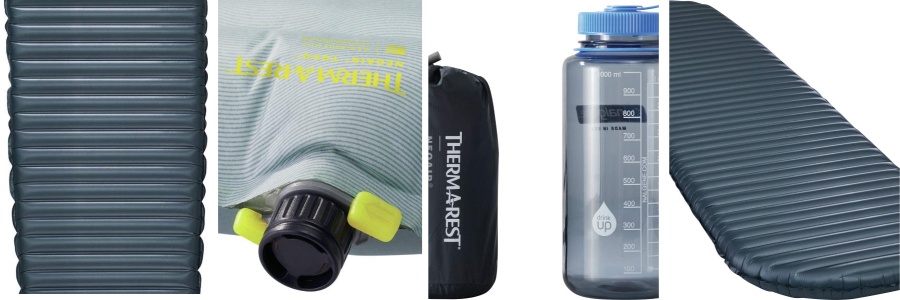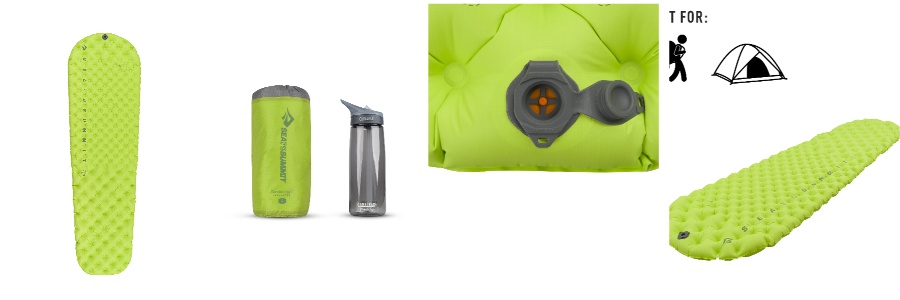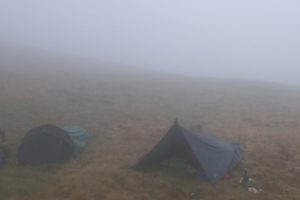This is my dilemma when I’m sleeping in a tent. I’m a side sleeper, I hate sleeping on my back or my front, and when I sleep on my side, my hip goes numb to the core. If I roll-over, the other hip goes numb, and I end up spending half the night rolling from side to side, this brings up the question, whats the best sleeping pad for side sleepers.
Its been like this for a few years, and while I have tried a few different pads and mats, either they don’t work, are not thick enough to provide real comfort, or are so heavy, I cannot take them hiking.
This was the way for a few years until I tried the Neo Air Uberlit Sleeping Pad. This is a blow-up, extremely light sleeping pad that has around 2.5-inches of thickness and has totally revolutionised the way I sleep. Gone are the days, where I did not look forward to bed, gone are the days when, as a side sleeper, I ended up with hip pain. Today, I can sleep all night on my side and wake up refreshed in the morning.
Sleeping Pads Vs Sleeping Mats
In this review, we’re looking at the best sleeping pad for side sleepers, but a question that I’m asked all the time is the difference between a sleeping pad and sleeping mat. The honest answer is that they are very similar, however the key difference is in their design.
Sleeping mats are generally those quarter of inch, foam pads that you see strapped on to every beginner backpacking across the Brecon Beacons finishing their Duke of Edinburgh award. In principle, they’re functional, however basically they take the edge of anything sticking into you. If for example you have decided to set up your tent on top of a rock, a sleeping mats will take the edge off and stop it really causing you pain.
Sleep Pads are slightly different. Rather than being a foam pad that you roll up, they are two side of plastic with some air between. The idea is that you pump it up to the correct pressure so that it not only will it provide a comfortable platform to sleep on, but it will also iron out any major things that you’re lying on top of, such as sharpe edges. The best thing about a sleeping pad is the fact that you’re lying on top of two inches of air, if you roll over onto your side, the air compresses, but as long as you have bought a top of the range sleeping pad, your hips will remain above the ground, and you will remain comfortable.
Therm-a Rest NeoAir UberLit Sleeping Pad

The NeoAir UberLit sleeping pad is firmly the best sleeping pad for side sleepers that I have ever tried, and I would highly recommend it. The good news, they come in a range of sizes from small to large, and even better news, the large comes with a length of 196cm which is long when compared to the competition, which is often only a max of 180cm and means my feet often have to stick out the end.
The sleeping pad folds up to the size of a medium size bottle, and weighs around 250-grams. Once you’ve unpacked your tent, you simply unfold the sleeping pad and let the self-inflating process start. The pad self inflates about half due to the atmospheric pressure outside the cells and the air pressure within the cells. Once their is an equilibrium between the two, you either need to take your pump out and pump the rest, or blow it up using your lungs.
The pad offers two-and-a-half inches of comfort and is built using a Triangular Core Matrix and closed cell design. The Winglock value helps to increase air flow for easier inflation and quicker deflation. While the pad is very strong and durable, it comes with a repair kit to fix any problems along your route.
Overall its a great sleeping pad, but it’s not all good news. Sadly, it’s not exactly cheap, I think I paid £150 for mine, and I have seen it as high as £200 in the past. Secondly, it’s a pain to blow up. Basically, you have two choices, either take a small hand held pump which means it now doesn’t weigh 250-grams but more like 750-grams or spend ten-minutes blowing your lungs out, trying to blow it up. In all honesty blowing it up is not that difficult, I just hate using my lungs, and hate taking a pump, but its the price I pay for a comfortable nights sleep. That said, at a £150+ depending on where you buy it, it’s something I will try to look after this year.
Finally, the last problem is it’s R-Value of 2.0. There is more below on how R-Values work, but effectively its a scale of between 0-and-5 that outlines how much insulation the sleeping pad has. 0 means it provides no insulation to the elements, while an R-Value of 5 means that it provides lots of insulation. The NeoAir UberLit has an R-Value of 2, which means it’s more suitable for warmer weather than colder. Another way of looking at it, if you’re going to use the NeoAir in the winter, you might need a slightly thicker sleeping bag in the winter, not a deal-breaker, but something to think about.
Features to Look Out For
If you don’t buy the NeoAir UberLit Sleeping Pad, there are a few other models that I would recommend, but I think you need to take into account a few factors when making your decision.
- Brand Named – The problem with air-filled sleeping pads is you need them to work correctly. If they don’t, all that happens is that the pad loses air in the middle of the night, and you find yourself sleeping on the ground.
- Thickness – Typically, three to four inches seems to be the norm. Much thicker, and the weight increases above acceptable limits. Thinner, and you have to put so much air into the pad at such a high pressure that it stops being comfortable.
- Design – Make sure you buy a closed-cell. In the past, sleeping pads were one giant plastic bag. The problem with this design is that the minute you put pressure on one part, the air moves, and you end up sagging in the middle. With a closed-cell design, the air is trapped in one location.
- Maximum Width – In an ideal world, you want to buy a sleeping pad with a width between 25-and-30 Inches. Sadly, most are 20 inches. Even the Therm-a Rest above has a width of only 24-Inches which I find is just about wide enough, although I would love a couple more inches.
- Inflating – you need to factor in both mat and pump when you consider buying. It’s pretty difficult to blow up a sleeping pad to the correct pressure without a pump, using only your lungs.
- Warmth Value – Sleeping pad insulation is determined by its R-Value. It’s a scale between 0 and 5, with 0 suggesting the pad has no resistance to cold, while a rating of 5 suggests that the sleeping pad is heavily resistant to the cold. In the real world, you really want an R-Value between 3-and-4.
Sea to Summit Comfort Light

The biggest problem with the NeoAir UberLit Sleeping Pad is its R-Value, it’s only 2.0, which is low and means that it doesn’t do a great job of keeping you warm. As a result, its probably not the right sleeping pad if you want to keep warm in the winter month. If you’re going to do some winter camping, it’s possibly a good idea to get a sleeping pad with a higher R-value.
This is where the Sea to Summit Comfort Light sleeping pad comes into its own. It’s designed with slightly more insulation and, as such, has an R-value of 3.7, meaning that it will provide suitable insulation even for the coldest nights in the winter.
The sleeping pad comes with a dimension of 182.9 x 54.6 x 6.4 centimetres while weighing just 600grams. In terms of design, its made using two distinct layers. The top layer is made with Exkin Platinum that reflects heat loss back to the user, while the bottom layer is made using thermolite insulation that helps to stop heat loss between your body and the ground. In design terms, it uses a closed-cell design with air-sprung technology. The idea behind a closed cell technology is that it keeps the air in one place. If you imagine a plastic bag, if you squeeze one side, the air simply moves to the other side of the bag.
This is not much help when it comes to you lying on your side. If the air simply moves away, you’ll be on the floor in no time, but this is where a closed-cell design comes into its own as it stops the air moving around, and most importantly, keeps you off the ground.
Final Thoughts
Two good choices, which do you go for, personally I think the R-Number does not matter and the Therm-a Rest NeoAir UberLit Sleeping Pad is the better sleeping pad. Remember, they are both about the same price, and therefore price is not a question, and this R-Number simply means that if you’re going use to your sleeping pad in the winter, a thicker sleeping bag might be the answer.
Personally, I have never had a problem and as such the best sleeping pad for side sleepers is the Therm-a Rest NeoAir UberLit Sleeping Pad.







